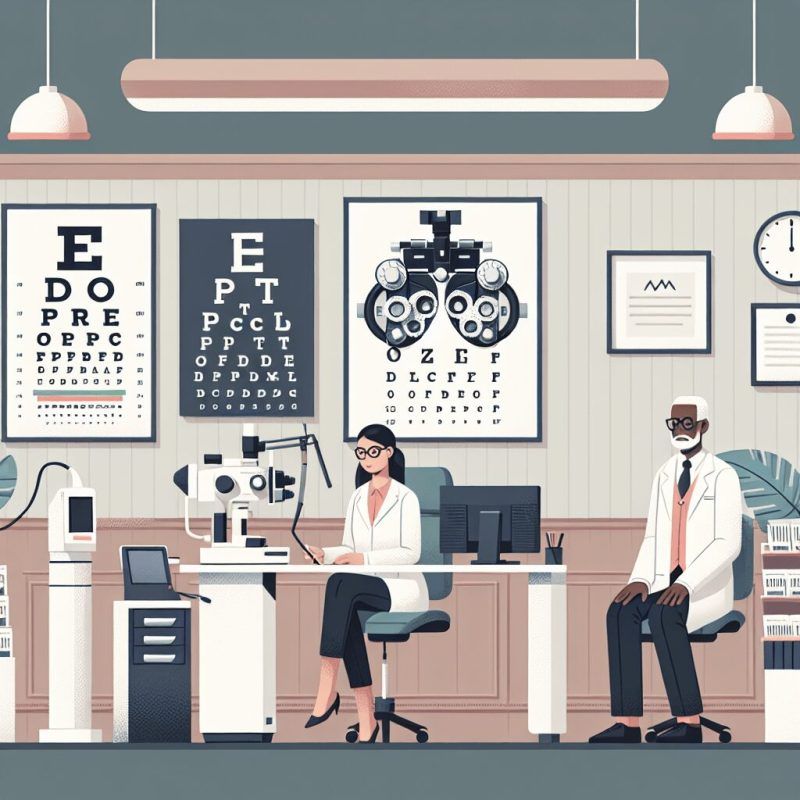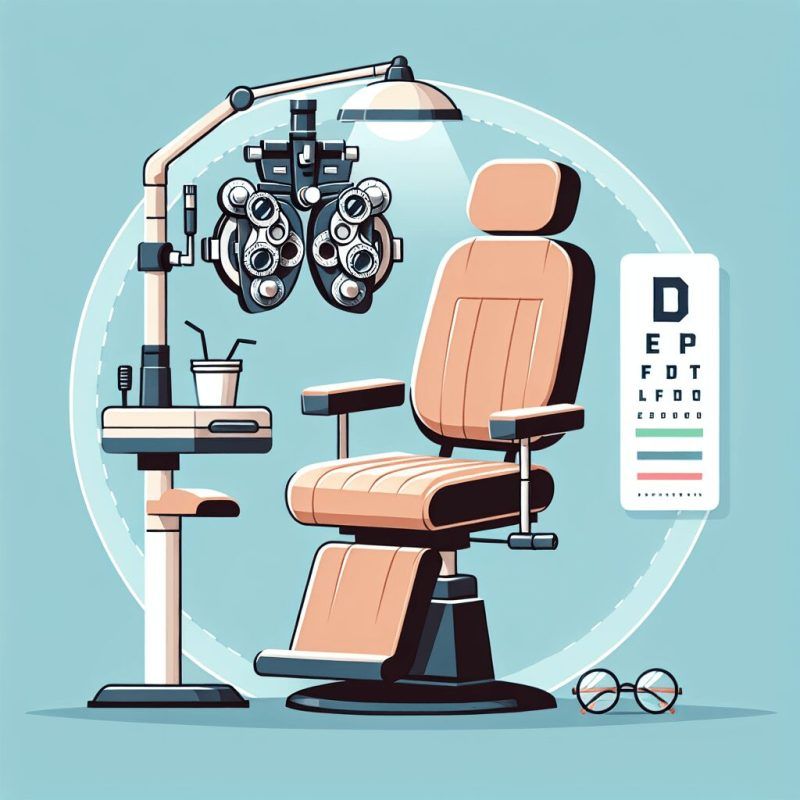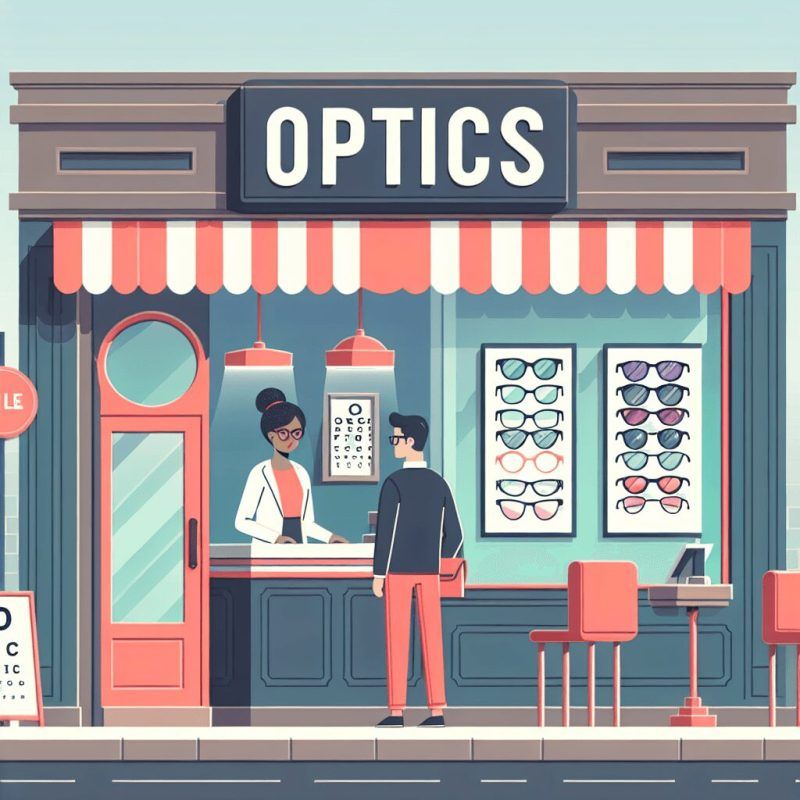Doctor's Corner
Navigating Astigmatism with Glass Prescription Lenses
Having astigmatism can make choosing the right prescription lenses a bit challenging. However, with the right information and guidance, navigating astigmatism with glass prescription lenses can be easier.
Understanding how these lenses work and how they can improve your vision is important. It is key to finding the perfect fit for your eye condition.
In this article, we will explore the ins and outs of astigmatism. We will also discuss how glass prescription lenses can help you see more clearly.
Understanding Astigmatism
What Is Astigmatism?
Astigmatism is a common eye condition. It happens when the cornea or lens is not shaped evenly. This causes blurry vision because light doesn’t focus correctly on the retina.
Symptoms include headaches, eye strain, and trouble reading or seeing things close up. To fix this problem, patients can wear special glasses or contact lenses made for astigmatism. These are called toric lenses, and they help improve vision by refocusing light.
Eye doctors may suggest soft toric lenses for comfort or rigid gas-permeable lenses for sharper vision. Regular eye check-ups are important to keep track of astigmatism and prevent vision loss.
For kids or people with high refractive errors, treatments like orthokeratology or vision therapy might be recommended.
Symptoms related to Astigmatism
Astigmatism may cause symptoms like blurred vision, eye strain, headaches, and trouble reading. To diagnose it, patients need a comprehensive eye exam. This exam checks the cornea, retina, and refractive errors to decide on the right corrective eyewear.
Glasses with cylindrical or toric lenses are typically recommended for correction. Untreated astigmatism can worsen vision and cause eye discomfort, affecting daily life quality. Regular eye check-ups and using astigmatism glasses or contacts are important in managing this condition.
Against the Rule Astigmatism
“Against the Rule Astigmatism” and “With the Rule Astigmatism” differ in the axis direction of cylindrical lenses used for correction.
Patients with this condition may experience challenges such as blurry vision, headaches, and difficulty reading. These issues stem from the irregular shape of the cornea or lens.
To manage “Against the Rule Astigmatism,” individuals should:
-
Undergo a comprehensive eye exam with an eye doctor to find suitable lenses.
-
Consider astigmatism glasses or soft toric lenses for clearer vision.
-
Have regular eye exams and consult optometrists to monitor symptoms and adjust prescriptions.
-
Explore options like blue light glasses for screen time or discuss surgery like LASIK for long-term correction.
By taking care of their eyes with proper eyewear and following healthcare professionals’ guidance, individuals with “Against the Rule Astigmatism” can effectively manage their condition.
How to Tell If You Have Astigmatism
Common symptoms of astigmatism include blurred or distorted vision, headaches, and eye strain.
If an individual has trouble reading or often squints to see clearly, it could be a sign of astigmatism.
It’s important to see an eye doctor if these symptoms are present.
Blurred or double vision may indicate refractive errors, such as astigmatism, caused by irregularly shaped cornea or lens.
During an eye exam, the optometrist may perform a retinal exam or refraction test to diagnose astigmatism accurately.
Specialized lenses like toric or soft toric lenses are commonly used for astigmatism correction.
When selecting eyewear, materials like trivex, high-index, or cylindrical lenses are recommended for the best vision correction.
Regular eye check-ups are essential to monitor astigmatism and ensure the prescription of the right glasses or contacts.
Meeting with an eye doctor for a comprehensive eye exam is important for good eye health and addressing vision problems promptly.
Choosing the Right Glasses for Astigmatism
How Glasses Help With Astigmatism
Glasses help people with astigmatism see better. There are different types available, like single-vision lens glasses and soft toric lenses. These glasses have specially designed cylindrical lenses that match the shape of the eye affected by astigmatism.
By wearing these glasses, individuals with astigmatism can have clear vision and comfort. Choosing the correct prescription lenses can help manage astigmatism symptoms and keep eyes healthy.
Types of Astigmatism Glasses
There are different types of glasses for correcting astigmatism. One option is toric lenses, specifically designed to fix the irregular corneal or lens curvature. These lenses come in materials like Trivex, high-index, and customizable choices.
Single-vision lenses correct refractive errors like astigmatism, nearsightedness, or farsightedness at one distance. Bifocal or progressive lenses, on the other hand, offer various corrective powers in one lens, suitable for different refractive errors.
For astigmatism, patients can choose between rigid gas-permeable and soft toric lenses. Rigid gas permeable lenses provide clear vision and allow corneal oxygen but may need an adjustment period. Soft toric lenses offer comfort but might not correct all types of astigmatism. Consulting with an eye doctor is crucial to finding the best option for each individual based on their condition and lifestyle.
Single-Vision Lens Glasses
Single-vision lens Glasses are great for astigmatism. They fix vision problems from irregular corneas or lenses. These glasses focus light right on the retina, making vision clearer and reducing issues like blurriness and headaches.
Compared to bifocal or progressive lenses, single-vision lenses give consistent correction for astigmatism across the whole lens. This ensures a smooth vision correction experience, unlike bifocals or progressives that have segmented corrections.
Bifocal or Progressive Lens Glasses
Individuals with astigmatism can choose between bifocal or progressive lens glasses to correct their vision.
Bifocal lenses have two areas for different tasks: one for distance and one for close-up activities like reading. Progressive lenses offer a seamless transition between distances without a visible line. Both types effectively correct astigmatism but differ in design and function.
These specialized glasses provide clear vision at all distances, unlike single-vision lenses. They address refractive errors and specific astigmatism symptoms such as blurred vision and headaches. Factors like lifestyle, visual needs, and comfort should be considered when choosing between bifocals and progressives.
Rigid Gas Permeable Lenses
Rigid Gas Permeable Lenses are great for correcting astigmatism. They provide clear and crisp vision. Unlike soft toric lenses, rigid gas-permeable lenses are rigid. This helps them keep their shape on the cornea and gives consistent vision correction for astigmatism patients.
These lenses are a valuable option for correcting astigmatism, offering improved vision and comfort. To learn more about their benefits, schedule an appointment with an optometrist.
Soft Toric Lenses
Soft Toric Lenses are for astigmatism, a common eye problem. These lenses have a special shape that fits the irregular cornea of people with astigmatism. Unlike regular contact lenses, they stay in place on the eye for clear vision. Soft Toric Lenses are better than glasses or hard lenses because they move with the eye, adapting to their shape changes. This helps maintain clear vision all day, which many patients like.
These lenses also offer improved comfort and clearer vision, making life better for those with astigmatism. To see if Soft Toric Lenses are right for you, talk to an eye doctor.
Contact Lenses for Astigmatism
What are Spherical Contact Lenses?
Spherical contact lenses are designed to correct common refractive errors like myopia (nearsightedness) and hyperopia (farsightedness). These lenses have the same power in all meridians of the lens, making them suitable for patients without astigmatism. They offer a smooth, consistent vision correction for individuals with standard refractive errors. On the other hand, toric contact lenses are specially crafted to address astigmatism, which occurs when the cornea or lens is irregularly shaped.
Unlike spherical lenses, toric lenses have varying powers in different meridians to correct the refractive error caused by astigmatism. It is essential for patients with astigmatism to consult with their eye doctor to determine the most suitable type of lens for their specific eye condition. Regular eye exams are crucial for detecting astigmatism and other visual issues early on to prevent further complications.
Protecting Your Eyes
Protecting your eyes is important. One way to do this is by wearing glasses made for astigmatism.
These glasses, called toric lenses, can correct vision problems caused by irregular corneas. They help you see more clearly.
Prescription sunglasses are also crucial. They protect your eyes from harmful UV rays, which can lead to conditions like cataracts and macular degeneration.
Taking care of your eyes with the right eyewear and check-ups is key to maintaining good vision. It can help with activities like reading and reduce eye strain from too much screen time.
FAQ
What is astigmatism?
Astigmatism is a common eye condition that causes blurred or distorted vision. It occurs when the cornea or lens is irregularly shaped, leading to difficulty focusing. Treatment may include corrective lenses, such as glasses or contact lenses.
How can prescription lenses help in navigating astigmatism?
Prescription lenses for astigmatism can correct the irregular curvature of the eye, improving vision clarity and reducing symptoms like blurred vision and eye strain. By wearing these specialized lenses, individuals with astigmatism can navigate tasks such as driving, reading, and using digital devices more comfortably and effectively.
Are there special considerations to keep in mind when getting glasses for astigmatism?
Yes, when getting glasses for astigmatism, make sure to have a proper fitting by an optometrist, choose lenses with cylinder power, and consider special lens coatings to reduce glare.
Can contact lenses be used instead of prescription glasses for astigmatism?
Yes, contact lenses can be used for astigmatism instead of prescription glasses. Toric contact lenses are specifically designed for astigmatism and provide clear vision. It is important to get a proper fitting from an eye care professional.
What are the potential benefits of using special lenses for astigmatism?
Special lenses for astigmatism can provide clearer vision, reduce eyestrain, and improve overall visual quality. For example, toric contact lenses can correct astigmatism, while glasses with cylindrical lenses can provide better visual acuity.
If you’re searching for high-quality prescription lenses that meet all standards and can address any eye condition, contact Superior Eye Care in The Woodlands and Quality Eye Care in Willowbrook. Don’t take any risks when it comes to the well-being of your eyes; always trust the best.
The post Navigating Astigmatism with Glass Prescription Lenses first appeared on Optometrist in Woodlands & Willowbrook TX.
Doctor's Corner





